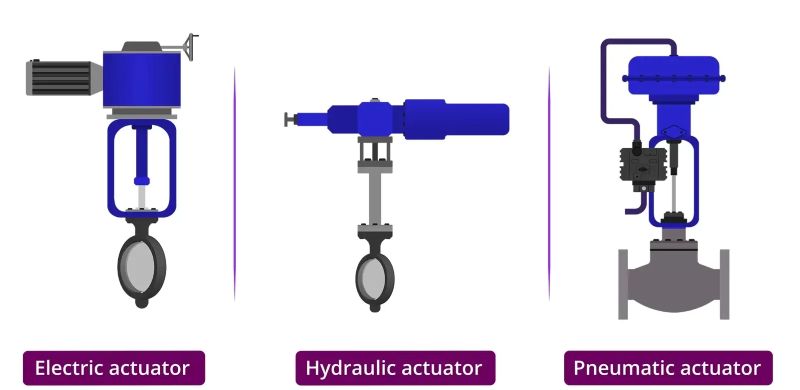


Pneumatic Valve Actuators: Overview, Types, and Applications
Pneumatic valve actuators are critical components in industrial automation, converting compressed air into mechanical motion to operate valves. These actuators automate the opening, closing, or modulation of China control valves, playing an essential role in industries that require precise control over systems such as flow, pressure, and temperature. This article explores the types, functioning, advantages, and applications of pneumatic valve actuators.
Pneumatic actuators are commonly classified into two main categories: rotary actuators and linear actuators. Rotary actuators are often used in valves such as ball, butterfly, and plug valves, where rotational motion is necessary.
Rack-and-Pinion Actuators: These are the most common rotary actuators. They feature a piston connected to a rack, which engages with a pinion gear. When air pressure is applied, the piston moves, rotating the pinion gear and thereby turning the valve stem. These actuators are ideal for valves requiring a 90-degree rotation, like ball and butterfly valves.
Scotch Yoke Actuators: These actuators use a piston connected to a yoke that drives a crankshaft. This design is preferred for applications requiring consistent rotational speed or higher torque, offering precise control over the valve’s position.
In addition to design-based classification, pneumatic actuators are also categorized by their operation:
Double-Acting Actuators: In these actuators, compressed air is used to move the piston in both directions. This provides precise control for both valve opening and closing, making it suitable for applications requiring full control over the valve movement.
Spring-Return Actuators: These actuators rely on a spring to return the valve to its default position when air pressure is removed. They are commonly used in fail-safe applications, ensuring that the valve returns to a “safe” position in case of air loss or power failure.
Pneumatic actuators operate by using compressed air to apply pressure to one side of a piston within a cylinder. This pressure causes the piston to move, and this motion is transferred to the valve. In rotary actuators, the linear motion of the piston is converted into rotational motion to operate the valve stem. Depending on the actuator type, the piston returns to its original position either through a spring (in spring-return actuators) or by applying air pressure to the opposite side of the piston (in double-acting actuators).
Fail-Safe Operation: Pneumatic actuators, especially spring-return types, provide a fail-safe mechanism. In the event of an air or power failure, the valve automatically returns to a predefined safe position, crucial for safety-critical applications.
Fast Actuation: Pneumatic actuators offer rapid response times, making them ideal for applications requiring quick valve movements. Their speed is particularly advantageous in industries like chemical processing and oil and gas.
Safety in Hazardous Environments: Since pneumatic actuators operate using compressed air, they pose no risk of sparks, making them suitable for explosive or hazardous environments such as mining, oil, and gas industries.
High Duty Cycle: These actuators can operate continuously without overheating, which is beneficial in applications requiring frequent or constant valve movements, such as in material handling or water treatment plants.
Pneumatic actuators are widely used across various industries:
Oil and Gas: Pneumatic actuators control valves for regulating flow, pressure, and safety in pipelines and refineries.
Mining: These actuators are used in high-pressure applications, such as controlling valves for dust control systems or rock washing.
Water Treatment: In water and wastewater treatment, pneumatic actuators control valves to ensure proper flow and maintain safety standards.
Food and Beverage: They are used in food processing and packaging, where fast, reliable valve control is essential.
Chemical Processing: Pneumatic actuators regulate the flow, pressure, and temperature in chemical processing systems, ensuring the safe and efficient operation of plants.
Pneumatic valve actuators provide fast, reliable, and fail-safe solutions for valve automation in a variety of industries. Their ability to perform well in hazardous environments, high-duty cycles, and applications requiring rapid response makes them a preferred choice for critical processes. By understanding their design and operational principles, industries can select the most suitable actuator for their specific needs, ensuring optimal performance, safety, and efficiency.Know more about Google SEO Directory
